Is Your Lighting System Affecting Your Sight?
Human life depends on light. It is cool to know that more than 85% of information is acquired through our eyes which require light and sun is the most important natural light. In real sense, Light is a radiant energy that provides visual sensation. In the review of lighting the are several physical processes we will be looking at and this will show certain characteristics of lighting with its mode of operation in a particular location.
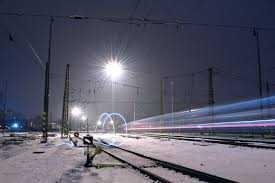
pxhere:Lighting System
In lighting system there is three important consideration in order to make energy supply efficient, these are:
- Ensure selection of most efficient lighting source
- Note the type of job you want to use the lighting for (application), this will determine the lamp color, brightness, and other characteristics.
- To know the lighting level required to maintain the productivity and improvement in security and safety management.
The history has revealed that luminous efficacies increase through centuries and ranges from 0.01 lm/W for candlelight to modern white lighting of above 100 lm/W that huge really?
In 1996, one of the approaches on how to produce white light was discovered, which can be done by use of a blue LED coated with a white phosphorus. On the other hand, white light can be produced by use of additive mixing of three primary color which is (Red, Blue, and Green)
In my recent post on Zappltech it reveals that light is a wave and to be precise its an electromagnetic wave that unaided human eyes can perceive. This wave has the speed of propagation which is measure in kilometer/sec with a value of 299,792.5km/sec with a wavelength ranges from 370 to 800 nanometers.
As Sunlight is the natural lighting sources so we have artificial sources which employ incandescent lamps (depend on the temperature of there filament: spectrum is continuous) and gas discharge lamps ( this radiate in a specific frequency and they are usually spectrum discontinuous).
Let's Look at Physical Processes of Light waves.
Incandescence: This is known as Thermo-luminescence, which means it requires heat energy to glow, which an application of heat the lamp will not glow. It is radiation at high temperature that produces the physical output of glowing in incandescence.
Example of this physical process: gas lamp, candles-wax, lamps-oil, incandescence lamp.Luminescence: This refers to the emission of light through a substance ( Chemical substance)
The first luminescence we shall look at is Electro-luminescence. This action or process requires chemical and electrical actions. Light passes through a semiconductor or phosphorus material to glow.
Fluorescence also known as Photoluminescence this process deals with the absorption of photons meaning radiation is absorbed in one wavelength and radiation at another wavelength. E.g:
Phosphorescence also known as chemiluminescence this process talk about how energy is absorbed at some time and radiated later as glow. E.g: Luminous paints that contain calcium sulfide lead to phosphorescence.
In all these processes, to receive a good efficient lighting there must be a combination of luminescence and fluorescence processes. You will agree with me that lighting is good when our eyes can clearly and pleasantly perceive the things around us.
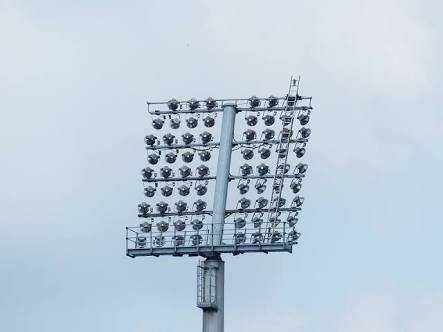
**Pixabay: Flood Light, Lighting System
What is good Lighting?
The first we need to recognize here is the light color. For a very long variable wavelength, the color of your lighting is Red with 700nm, for a short variable wavelength it is Violet with 400nm while Green stands in between the two color with wavelength 500nm.
**The eyes cant see colors unless the ambient luminance is above 3 candelas per square meter. according to slide review. This shows the nature of light that can be produced.
Nature of Light
In view of nature of light, there is need to understand some terms in lighting. Light has a measurement with some parameter like lumen, luminance intensity, illuminance, footcandle, Candela and luminance flux.
To describe few of them:
The rate of light energy from the light source is known as Luminance Flux
The unit of measuring Luminance Flux is known as Lumen
The emitted lumen per unit of solid angle is known as Luminance Intensity
Candela is the measure of luminance intensity and 1cd is equivalent to 12.57Lumen

**Wikipedia:IllumiNations: Reflections of Earth
During lumination, two things happen when light strikes a surface. The two happening are absorption and reflection. The absorption of light by a surface that produces the light we see, and this is in relation to configuration and colour.The striking of light on a surface is known as Incidence
The measure of light in relation to international standard has to follow CRI standard. CRI scale ranges from 0 - 100CRI and this shows how well a light source renders color compare to incandescence and daylight sources.
- Incandescence lamp: 2,700K, 100CRI
- Cool white fluorescent tube: 4,100k, 62 - 80 CRI
- Noon Sunlight: 4,500k - 5,400k, 100CRI
Remember that the unit of measuring luminance intensity is Lumen, there are several lumen traps we need to know.
- Lumen maintenance
- Colour Reproduction
- Ballast and Driver Efficiency
- Uniformity of light distribution
- Scotopic Superiority
- Luminaries Efficiency
On this review, i will explain Lumen maintenance and Scotopic Superiority.
Lumen Maintenance: Maintenance is very important because the human eyes can adapt well to up to 30% reduction in light level. When light level falls below the 30% threshold reduction in light level become evident and vision compromised. The light has to be designed based in average lumen over the useful life of a light.
Scotopic Superiority: This is referred to the vision of the eyes under low light condition or night condition. In normal light, the vision of cone cell dominates the photopic vision. Photopic vision means the sensitivity of the eye. This is what response to color and perception of fine details.
LED AND TRADITIONAL LAMP
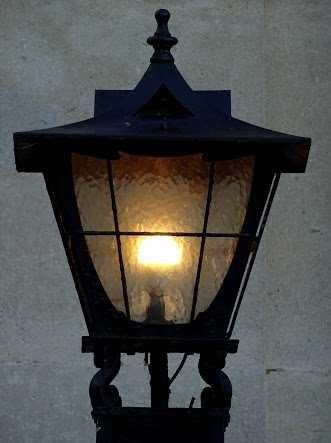 | 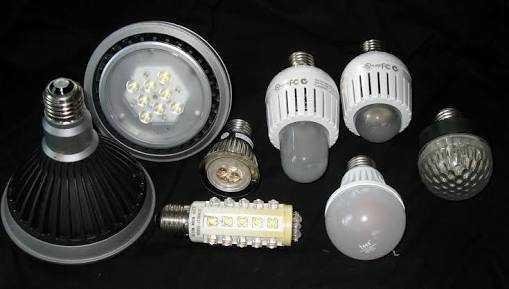 |
An HPS lamp has a high profile, a single source of light and a considerable amount of light trapped in the reflector.
LED has a small profile, several sources of light, ensuring better light distribution. In LED all light is directed downward. There are no problems of reflector efficiency, aging of reflector coating and consequent loss of light output.
Human being eyes can only response better to the shorter wavelength ranges between 510 and 550nm. This is conspicuous by there absence in HPS lights. When it comes to scotopic equivalent lumens HPS lamps are no match for LED lights with richer light spectrum. According to illumination scheme, light sources and appearance can be Ambient, Directional and Spotlight.
The new technology for lighting is in LED, which are light source based on electroluminescene. The importance and functionality of LED to other lamps were shared in my Lighting Review
What is Luminaire? This is referred to a complete lighting unit which consists of one or more light sources(light) with optical and mechanical components.
The luminaire is designed in a way to operate the lamps, in positioning, protecting and connecting the lamp to the power source. You will agree with me that lighting fitting is one of the important things in lighting apart from lamp but the most important things are the reflector.How much impact lamp's light reaches an environment, as well as the lighting distribution pattern, is very important in the lighting system, to this fact we consider reflector as diffuse or as specular.
It is diffuse when painted or powder coated white finish while for specular it is usually polished or mirror-like. With this notion, the level or measure of reflectance of the reflector material together with the shape determines the effectiveness and efficiency of the fittings.
Luminaire comes with different shapes and it is the space and area with the height of the location will determine the types and the luminaire that is suited for the place.
In conclusion, light is an electromagnetic radiation that is capable of affecting the sense of sight, therefore use an appropriate lighting system, should you need help ask an expert.
Thank you for reading.
REFERENCES
Illumination Engineering society, Handbook. http://www.ies.org/. [Last cited on 2017 May 20].
Illumination Engineering and Luminaries, Handbook‑133096120/BIS‑Standardssociety:
https://www.scribd.com.Lighting and illumination engineering: J.Koshel
Flow-line Method: LED backlight (Minano et al, published in SPIE proc. 5941, 2005)
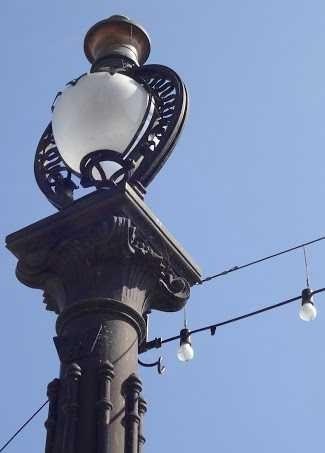)
Light is both a wave and a particle: the duality of light made us know. I like the topic. Thanks for sharing.
Thanks for comment. Light: wave-particle duality
To the question in your title, my Magic 8-Ball says:
Hi! I'm a bot, and this answer was posted automatically. Check this post out for more information.
Your Post Has Been Featured on @Resteemable!
Feature any Steemit post using resteemit.com!
How It Works:
1. Take Any Steemit URL
2. Erase
https://3. Type
reGet Featured Instantly & Featured Posts are voted every 2.4hrs
Join the Curation Team Here | Vote Resteemable for Witness
Everyone needs to read this...l used to sit so close to my light with the hopes of having a good feel of my view..little did l know that was bad from years back..thanks for this thought my able engineer @samest
You are welcome brother
True we humans need light for everyday of our existence, can you imagine being in the dark well I can't imagine that, the extended exposure to the sun’s ultraviolet (UV) rays can also damage the eye, also reading in dim light can as well damage your eyesight. Thanks for sharing with us
Good comment. Light is a reflection characteristics of a reflected body. Its shine upon an object and we receive the output as lumination